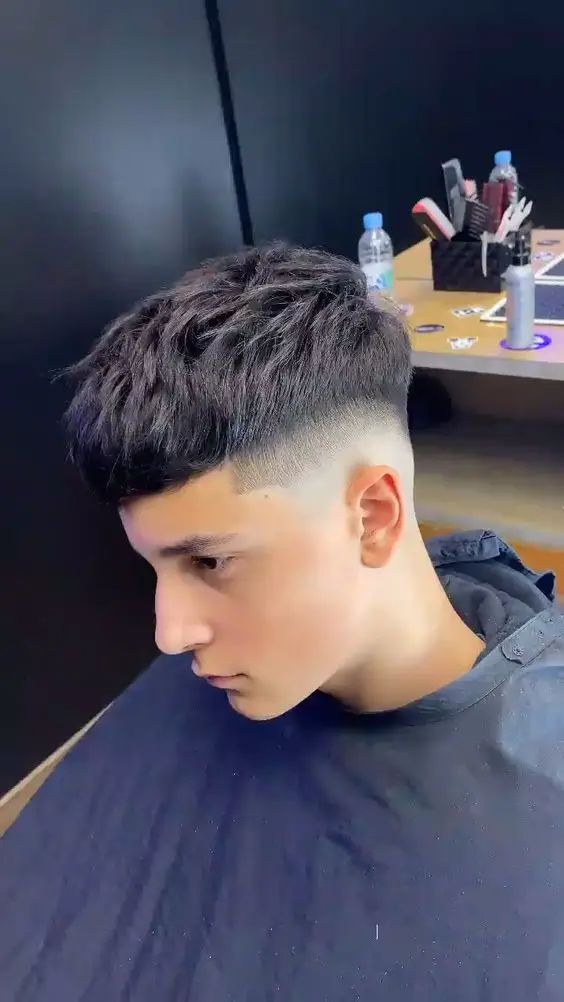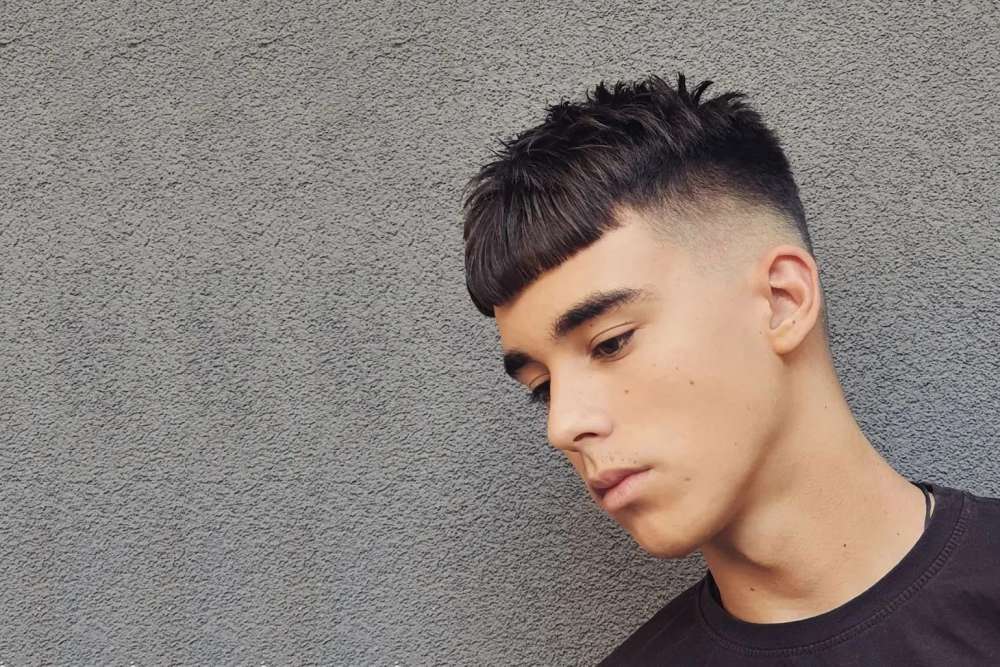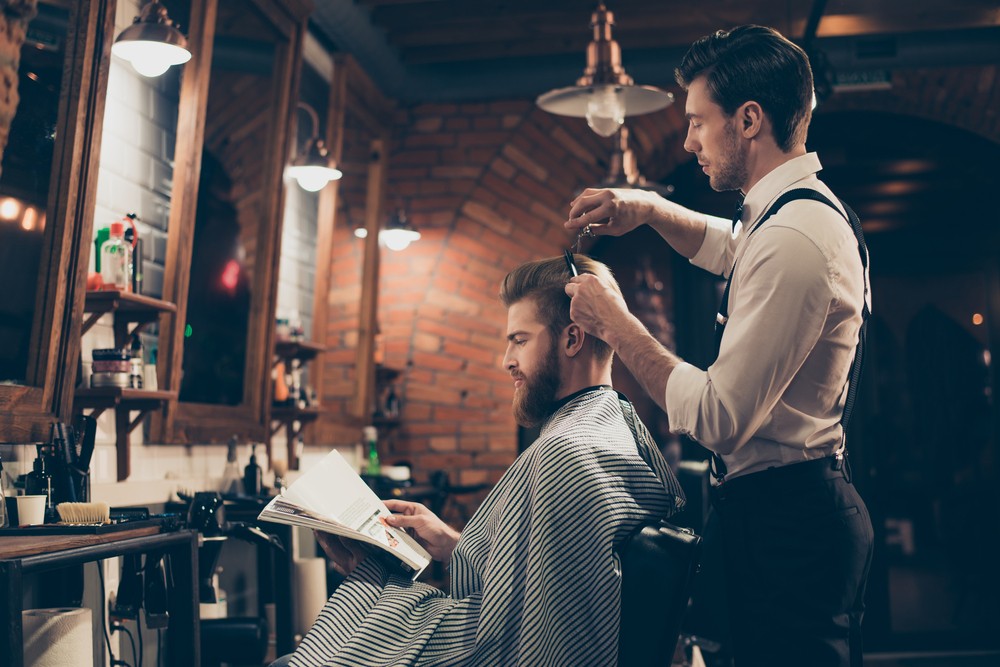The Takuache haircut is a tapered hairstyle with straight bangs that has become a symbol of Mexican-American identity and expression.
It is also known as the Edgar haircut, el cuh haircut, takuache cuh haircut, or a hood bowl.
It originated in Mexico and gained popularity among young Mexican-American men who love wearing expensive Mexican apparel, driving pickup trucks, and listening to trap music.
In this article, we will explore the history and significance of the Takuache haircut, its impact on social media, how to style and wear it, and how to appreciate its cultural value while avoiding appropriation.
The History and Significance of the Takuache Haircut Indigenous Roots and Influence
The Takuache haircut has its roots in the indigenous cultures of Mexico, especially the Tarahumara people who live in the Sierra Madre Occidental mountain range. The Tarahumara are known for their long-distance running abilities and their traditional clothing which includes colorful skirts, headbands, and sandals. The Takuache haircut resembles the headband that the Tarahumara men wear to keep their hair out of their eyes while running3.
Popularity Among Mexican-American Youth
The Takuache haircut became popular among Mexican-American youth in the 2010s, especially in Texas, California, Arizona, and New Mexico. It is often associated with the takuache subculture, which is a term derived from the Spanish word “tacuache” meaning “opossum”.

The takuache subculture is characterized by a love for expensive Mexican apparel such as cowboy boots, hats, belts, and shirts; pickup trucks that are customized with loudspeakers, neon lights, and stickers; and trap music that mixes rap with ranchera/o music. The takuache subculture is also known for its humor, memes, slang, and lifestyle that celebrates being proud of one’s Mexican heritage.
Relationship with Ranchera/o Music Scene
The Takuache haircut is also closely related to the ranchera/o music scene, which is a genre of Mexican folk music that originated in rural areas. Ranchera/o music is typically sung by solo artists or groups accompanied by guitars, accordions, violins, trumpets, and other instruments.
Some of the most famous ranchera/o singers include Vicente Fernandez, Antonio Aguilar, Pedro Infante, and Jenni Rivera. The Takuache haircut reflects the influence of ranchera/o music on the takuache subculture, as many takuaches listen to trap versions of ranchera/o songs or remixes that feature ranchera/o singers.
The “Edgar” Haircut and Its Impact on Social Media Gen Z’s Fascination with the Edgar Cut
The Takuache haircut is also known as the Edgar haircut because of a viral video that was posted on TikTok in 2019. The video featured a young Mexican-American boy named Edgar who was getting his hair cut by his friend while another friend recorded them.

The video showed Edgar’s friend cutting his hair with a razor and giving him a Takuache haircut with straight bangs across his forehead.
The video became an instant hit on TikTok and other social media platforms, generating millions of views, likes, comments, and shares.
Many people found the video hilarious and started making memes, jokes, parodies, and challenges based on it.
Criticisms and Stereotypes
However, not everyone was amused by the Edgar video and the Takuache haircut. Some people criticized the video for being disrespectful to Edgar and his culture.
They argued that the video was mocking Edgar’s appearance and making fun of his haircut without his consent.
They also claimed that the video was perpetuating negative stereotypes about Mexican-Americans as being uneducated, poor, gangster-like, or illegal immigrants.
Some people also expressed their dislike for the Takuache haircut itself, calling it ugly, ridiculous, outdated, or inappropriate.
Styling and Wearing the Takuache Haircut Variations and Styling Options
The Takuache haircut is a versatile hairstyle that can be styled in different ways depending on one’s preference. The basic Takuache haircut involves buzzing the sides and back of the head short (usually with a high fade) while leaving the top hair longer and styling it in bangs with a lot of gel. However, there are many variations of the Takuache haircut that can suit different hair types and personalities.
For example:
- Wavy Blunt Takuache: This style works well for those with wavy hair. The short waves add some texture and movement to the blunt bangs.
- Spiked Takuache: This style is ideal for those who want to add some edge and attitude to their look. The bangs are spiked up with gel or wax for a punk rock vibe.
- Formal Takuache: This style is suitable for those who want to keep their Takuache haircut professional and elegant. The bangs are brushed neatly to one side or back for a sleek appearance.
- Takuache Mullet: This style is a bold choice for those who want to stand out from the crowd. The mullet combines a short blunt at the front with some longer hair at the back for a retro look.
- Takuache Contrast Fade Highlights: This style adds some color and contrast to the Takuache haircut. The top hair is dyed in a lighter shade than the natural hair color (such as blonde or red) while the sides are faded for a striking effect4.
Avoiding Cultural Appropriation
While anyone can wear a Takuache haircut if they like it, it is important to avoid cultural appropriation when doing so. Cultural appropriation is when someone adopts elements of another culture without respecting or understanding its origin, meaning, or significance. Cultural appropriation can be harmful because it can erase, exploit, or mock another culture’s identity, history, or expression.
To avoid cultural appropriation when wearing a Takuache haircut, one should:
- Learn about the history and significance of the Takuache haircut and its connection to Mexican-American culture.
- Acknowledge and appreciate the cultural value of the Takuache haircut without claiming it as one’s own or making fun of it.
- Respect and support Mexican-American communities and individuals who wear or create Takuache haircuts.
- Avoid wearing or styling the Takuache haircut in ways that are offensive, inappropriate, or stereotypical.
The Takuache Haircut as a Symbol of Mexican-American Identity and Expression
Reflection of Cultural Assimilation and Resistance
The Takuache haircut is more than just a hairstyle; it is also a symbol of Mexican-American identity and expression. It reflects how Mexican-Americans have assimilated into American society while also resisting assimilation pressures. On one hand, the Takuache haircut shows how Mexican Americans have adapted to American culture by adopting modern trends, styles, and influences. On the other hand, the Takuache haircut shows how Mexican-Americans have maintained their cultural roots by incorporating elements of their indigenous heritage, ranchera/o music scene, and takuache subculture.
Presence in Media and Pop Culture
The Takuache haircut has also gained a presence in media and pop culture, especially among Gen Z audiences who are fascinated by its uniqueness and humor. The viral Edgar video has spawned countless memes, jokes, parodies, and challenges on social media platforms such as TikTok, Instagram, YouTube, and Twitter. Some celebrities and influencers have also joined in on the fun by wearing or imitating the Takuache haircut in their posts or videos.
For example:
- Lil Nas X: The rapper and singer wore a fake mullet version of the Takuache haircut on his Instagram story in 2020.
- James Charles: The makeup artist and YouTuber attempted to give himself the Edgar cut on his YouTube channel in 2020.
- David Dobrik: The vlogger and YouTuber gave his friend Jonah the Edgar cut on his YouTube channel in 2020.
- Lele Pons: The comedian and YouTuber made fun of her cousin’s Takuache haircut on her Instagram story in 2019.
Appreciating the Cultural Significance while Avoiding Appropriation
The popularity of the Takuache haircut in media and pop culture can be seen as a positive sign of cultural diversity and representation3. However, it can also pose some risks of cultural appropriation or misrepresentation if not done respectfully or accurately.
Therefore, it is important to appreciate the cultural significance of the Takuache haircut while avoiding appropriation when wearing or engaging with it. As mentioned earlier, this can be done by learning about its history and meaning and acknowledging its value without claiming it as one’s own or making fun of it, respecting and supporting Mexican-American communities and individuals who wear or create Takuache haircuts, and avoiding wearing or styling the Takuache haircut in ways that are offensive, inappropriate, or stereotypical.



